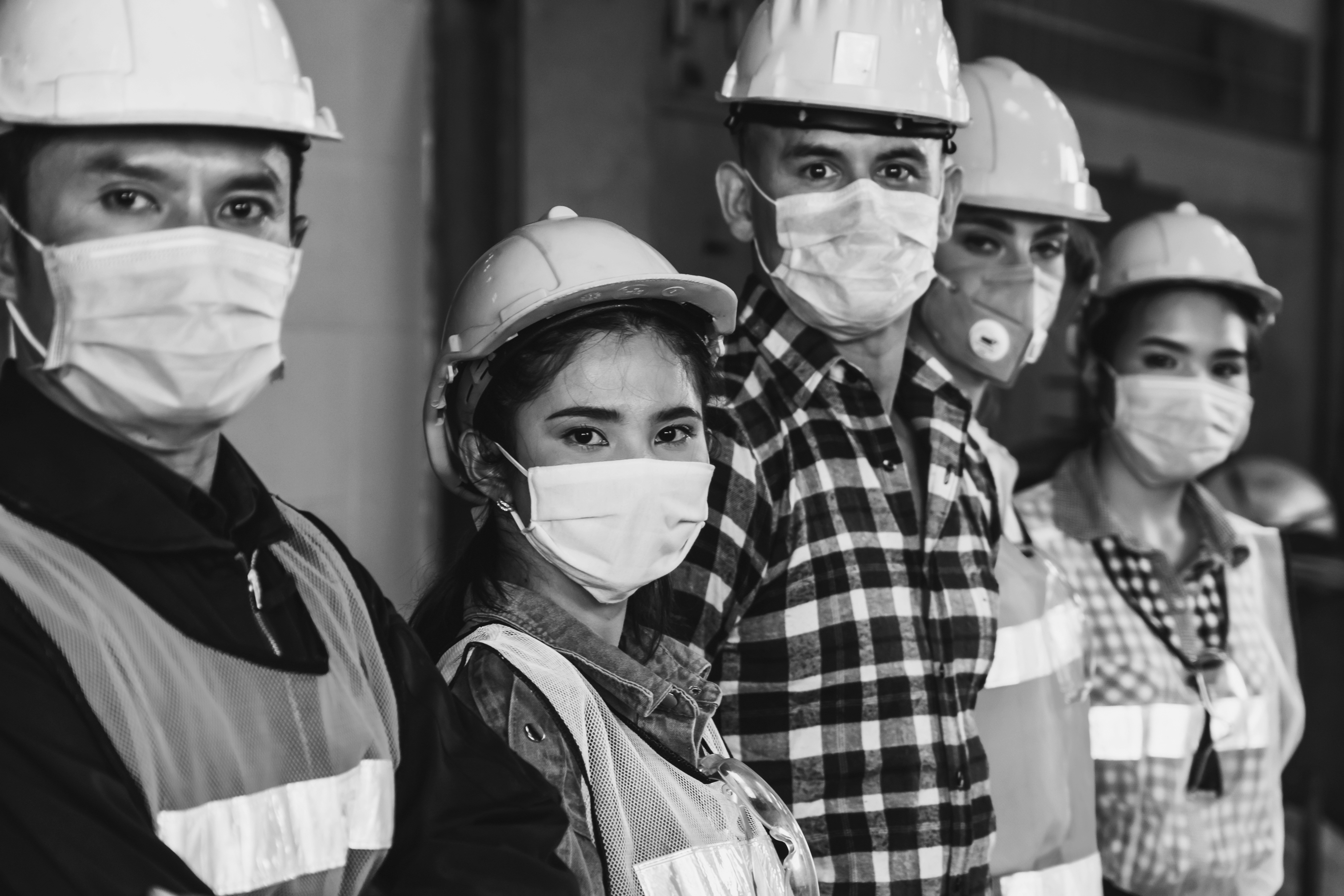How Covid-19 Could Change Companies’ Factory Floor
By DirectorCorps

May 11, 2020 Manufacturing
As the impact of Covid-19 began to spread across the nation, a factory in Lafayette, Indiana, that employs 3,500 faced the potential that one sick employee could infect the entire floor.
In response, it instituted rules for workers to stand 6 feet apart, developed a mobile application so employees could use to converse without standing near each other and implemented regular sanitization of the factory. These efforts helped this large manufacturing facility avoid a significant slowdown in production.
Factories have been some of the hardest hit areas in the novel coronavirus outbreak, where employees have long worked within an arm’s reach. How organizations demonstrated flexibility and agility determined whether their production levels could keep up with demand during in the coronavirus surge. As the U.S. moves to the next stage in the pandemic response, companies will have to invest in altering their operations. Understanding what’s changing can better prepare a board for conversations with management.
The amount a single factory produces, which has likely fallen post-virus, is an important wrinkle in weighing alterations. Nearly four out of five companies polled by the National Association of Manufacturers expect a financial impact from the virus. Meanwhile, the cost of labor will rise to ensure a safe workplace. Changing economics opens the door for smaller factories to implement new technological tools, says Ananth Iyer, director of the Dauch Center for the Management of Manufacturing Enterprises at Purdue University.
Iyer tracked efforts by local manufacturers, including the facility in Lafayette, in their responses to Covid. What became clear to him? Factories won’t look like they used to moving forward.
Smaller Factories Join Tech Rush
The economics of factories have changed. Even as the nation recovers from the shelter-in-place orders, the demand for most products isn’t expected to rise to the pre-coronavirus levels for some time. Meanwhile, organizations should expect to spend more on employees, schedule more shifts, increased cleaning and, potentially, higher pay.
Costs of technology, like robots, sensors and other tools, however, will go down the more they’re used. “As more companies adopt the technology, even smaller manufacturers will consider using it,” says Iyer.
Since labor cost will rise as production drops, the breakeven point for the production amount of a product before it’s worth investing in a specific technology will also fall. For instance, a pre-Covid factory may have determined that it made economic sense to invest in a robot that aids in cleaning at 500 units produced per day. Now, that same robot could make financial sense at 400 units or 300 units, depending on how much labor costs rise as demand shrinks, according to Iyer.
Directors should keep this in mind as they move forward with planning. It could make sense to reevaluate past technological upgrades to determine if the economic reality has changed.
Sensors Serve As Safety Measures
As the virus initially spread through the states, some factories developed unique tactics to ensure social distancing on the floor. Ford Motor Co., for example, tested wristbands that buzzed when employees come within six feet of each other.
Such sensors may become commonplace in any future factory design, given their adaptable design. Right now, experts say it’s important to remain at least 6 feet apart from others. If, for whatever reason, that would change to 10 feet, a company would simply tweak the sensor’s settings.
It’s an “efficient way” to encourage concrete action, says Iyer. As management teams seek new initiatives to keep employees safe, ensure they choose flexible solutions. After all, if another pandemic surfaces, your company won’t need to reinvest in technologies because the first version wasn’t adaptable enough.
Plan Nimble Factories
The machines and layout of a factory will be case dependent, varying based on what’s manufactured and created on the floor. But having plans to ensure the organization can adjust the factory floor, depending on the changing nature of this crisis or to adapt to a future concern, adds agility at a time when it’s needed most.
Question management about plans to adjust the factory floor, depending on a variety of scenarios. “Some machines are easier to move around than others,” says Iyer. What are the different layouts available on the factory floor, depending on the distance people need to work? What are the parts of the process that one person can handle? What requires multiple people?
Understanding these issues will help directors grasp where the firm may require greater investment to make the floor more flexible. That way the factory can keep humming — in this pandemic and in the future.
